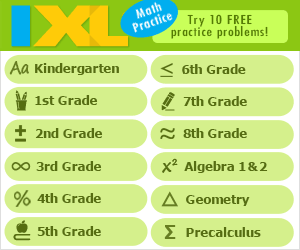6th Grade Science Standards - Earth Science
Checks for Understanding (Formative/Summative Assessment)
0607.6.1 Components of the Universe - Use data to draw conclusions about the major components of the universe 0607.6.2 Solar System - Construct a model of the solar system showing accurate positional relationships and relative distances 0607.6.3 Day, Month and Year - Investigate how the earth, sun, and moon are responsible for a day, lunar cycle, and year 0607.6.4 Calendars and Clocks - Explain why the positions of the earth, moon, and sun were used to develop calendars and clocks 0607.6.5 Ocean Tides - Illustrate the positions of the earth, moon, and sun during specific tidal conditions 0607.6.6 Seasons - Diagram the relationship of the earth and sun that accounts for the seasons 0607.6.7 Solar and Lunar Eclipses - Model the positions of the earth, moon, and sun during solar and lunar eclipses 0607.8.1 Wind - Recognize how convection currents in the atmosphere produce wind 0607.8.2 Solar Energy - Design an experiment to investigate differences in the amount of the sun's energy absorbed by a variety of surface materials 0607.8.3 Ocean Currents - Design an experiment to demonstrate how ocean currents are associated with the sun's energy 0607.8.4 Ocean Affects Weather - Analyze ocean temperature data to demonstrate how these conditions affect the weather in nearby land masses 0607.8.5 Ocean Current Maps - Interpret data found on ocean current maps 0607.8.6 Weather - Use data collected from instruments such as a barometer, thermometer, psychrometer, and anemometer to describe local weather conditions State Performance Indicators
SPI 0607.6.1 Universe - Use data to draw conclusions about the major components of the universe SPI 0607.6.2 Distance - Explain how the relative distance of objects from the earth affects how they appear SPI 0607.6.3 Time - Distinguish among a day, lunar cycle, and year based on the movements of the earth, sun, and moon SPI 0607.6.4 Moon Phases - Explain the different phases of the moon using a model of the earth, moon, and sun SPI 0607.6.5 Predict Tides - Predict the types of tides that occur when the earth and moon occupy various positions SPI 0607.6.6 Explain Seasons - Use a diagram that shows the positions of the earth and sun to explain the four seasons SPI 0607.6.7 Eclipses - Explain the difference between a solar and a lunar eclipse SPI 0607.8.1 Convection - Analyze data to identify events associated with heat convection in the atmosphere SPI 0607.8.2 Sun and Wind - Recognize the connection between the sun's energy and the wind SPI 0607.8.3 Cause of Currents - Describe how temperature differences in the ocean account for currents SPI 0607.8.4 Predict Weather - Interpret meteorological data to make predictions about the weather
Search Internet4Classrooms

Custom Search






